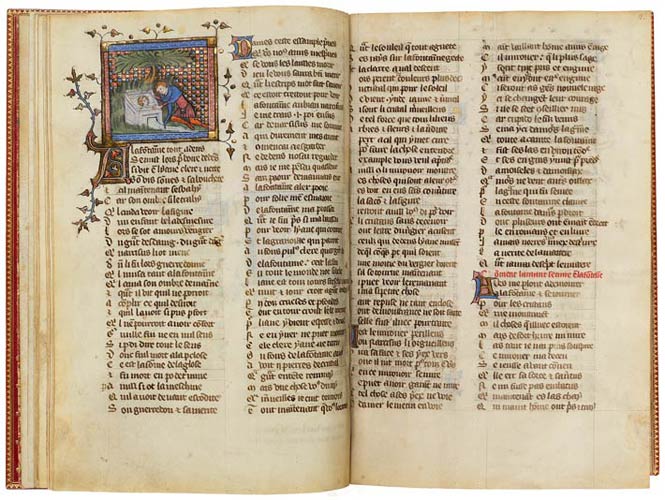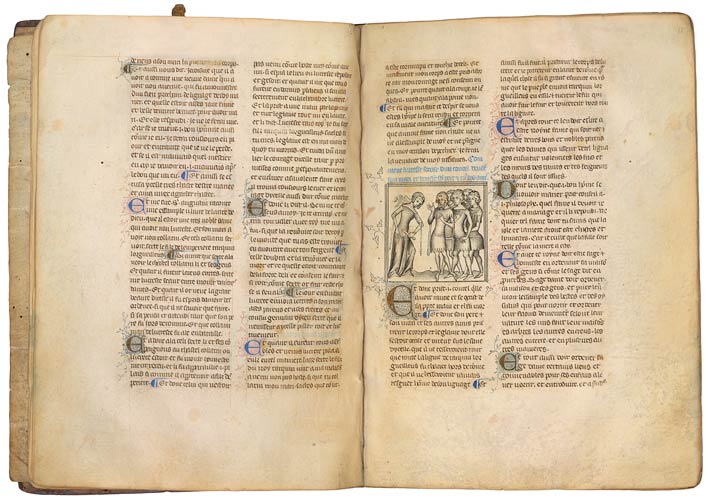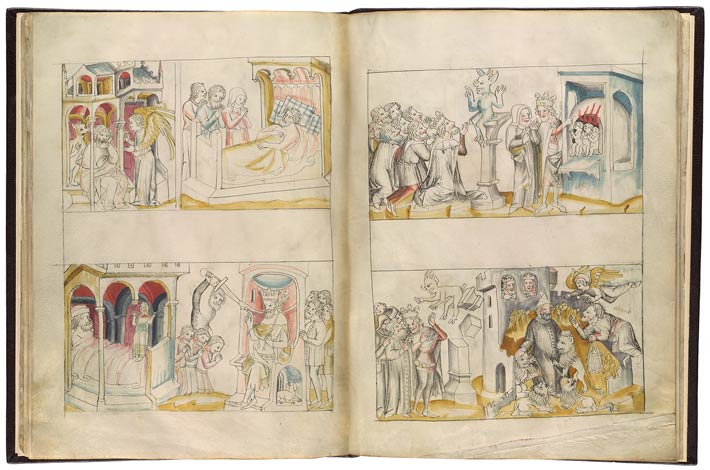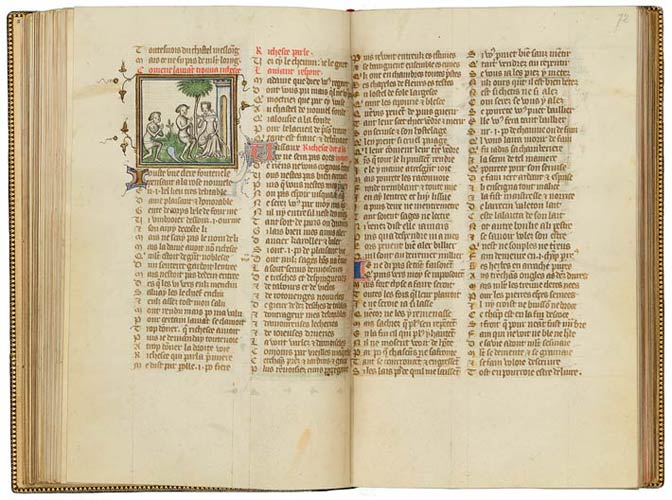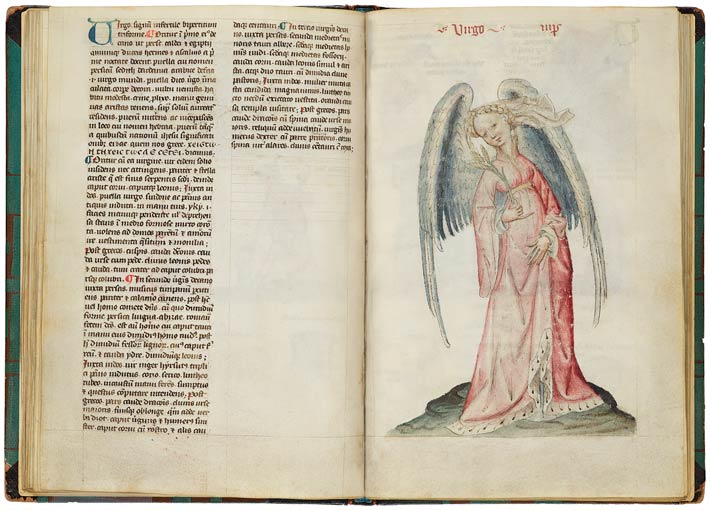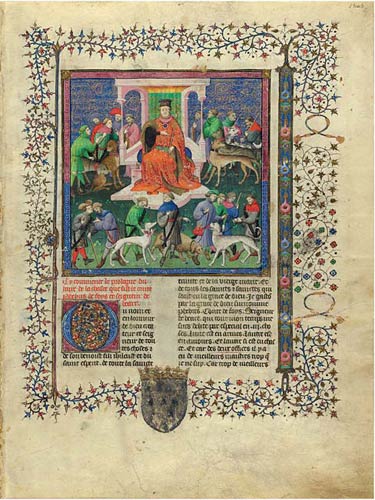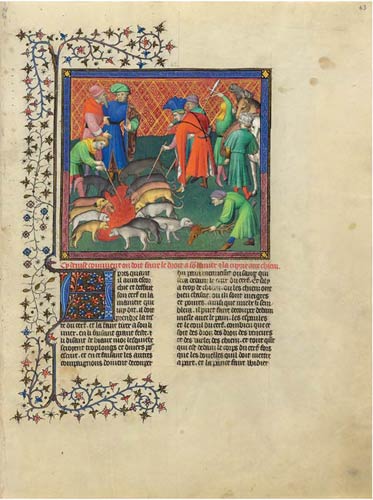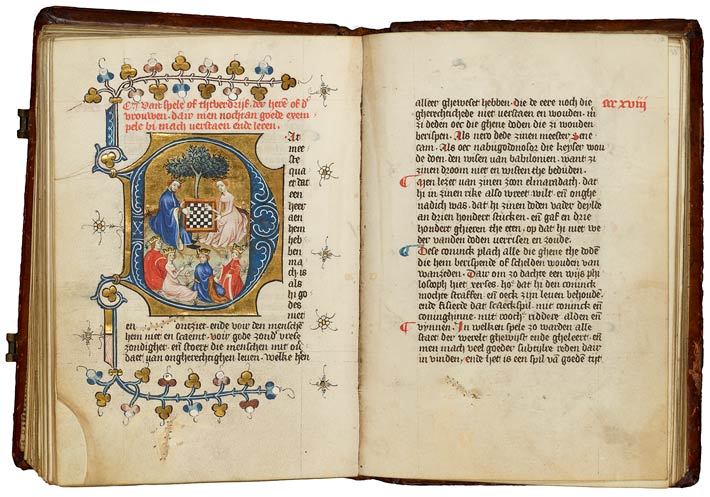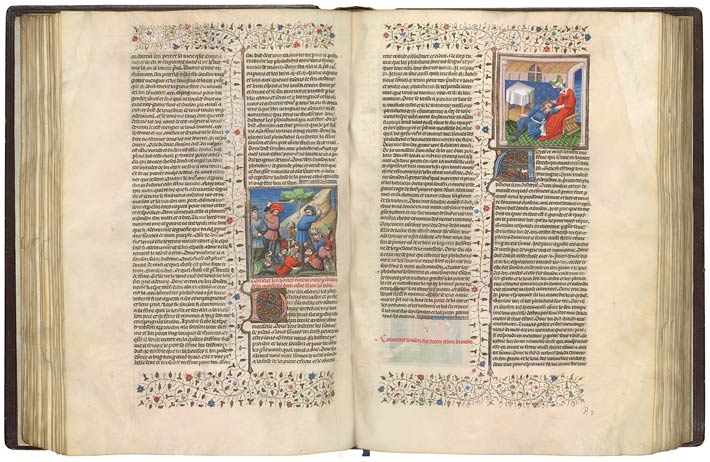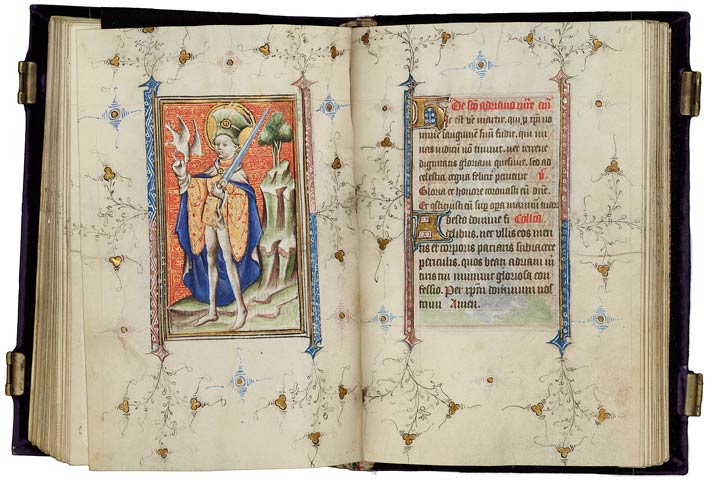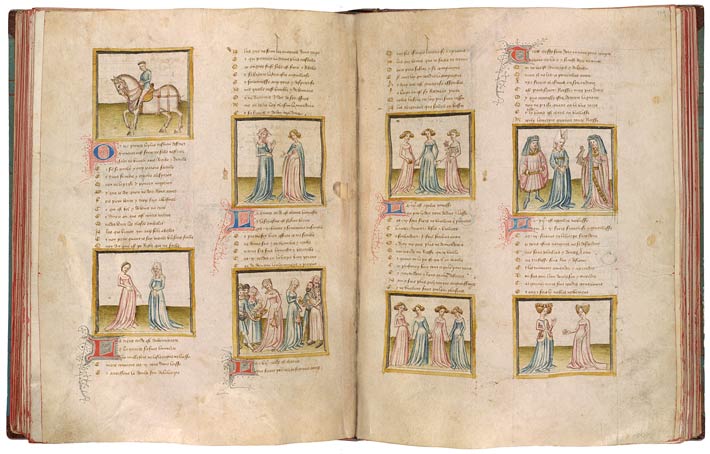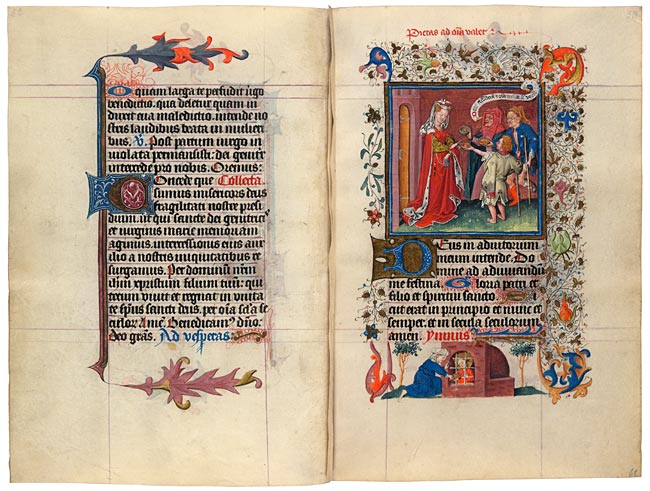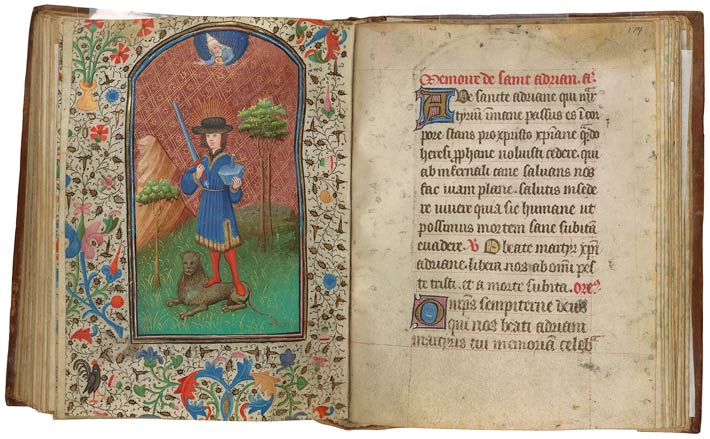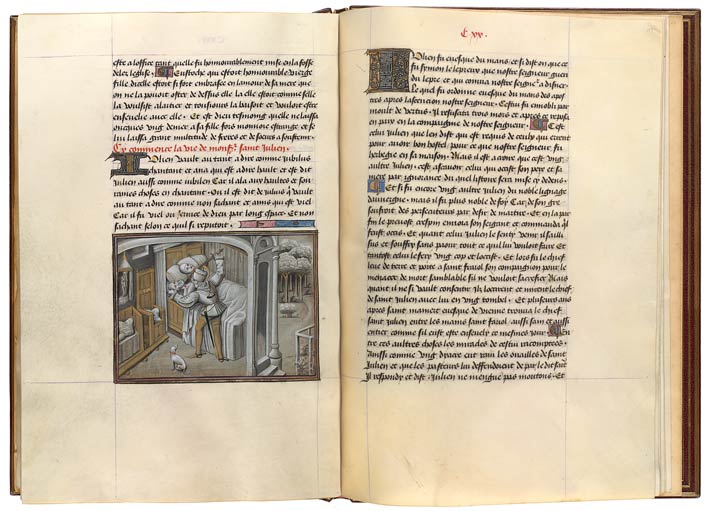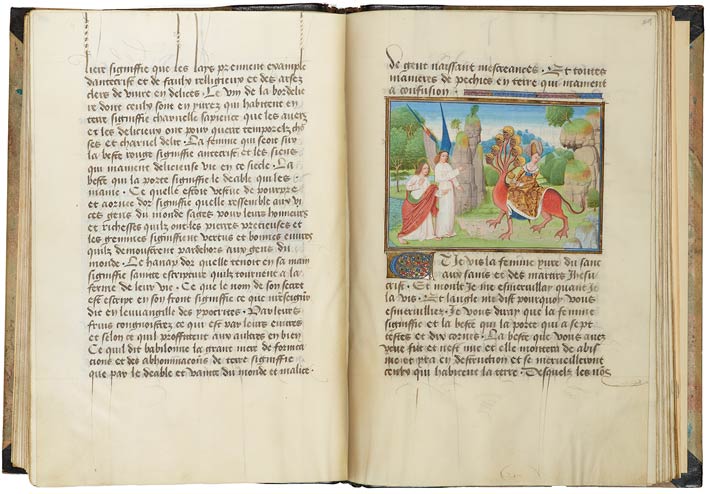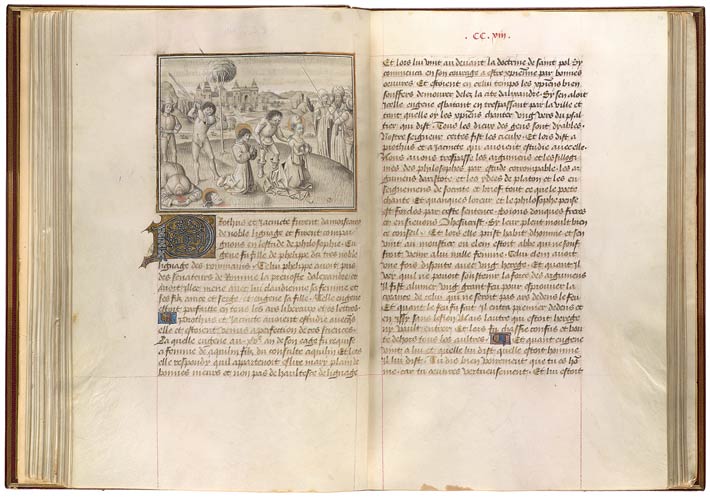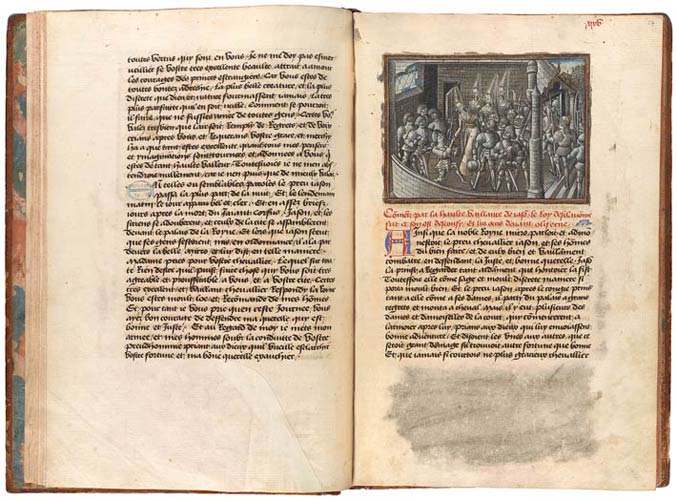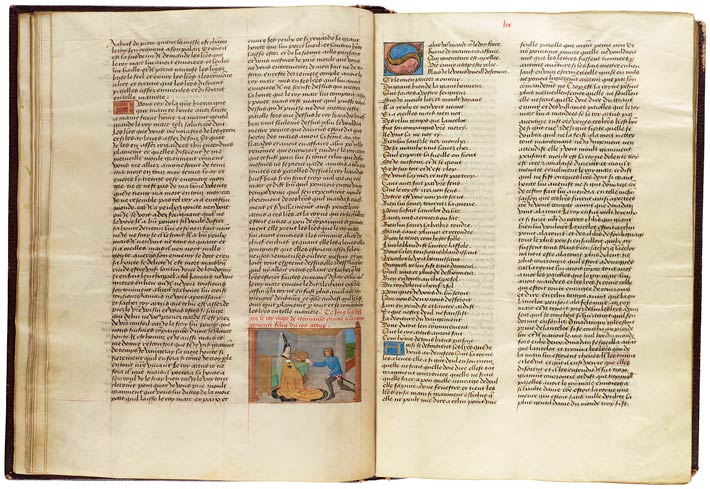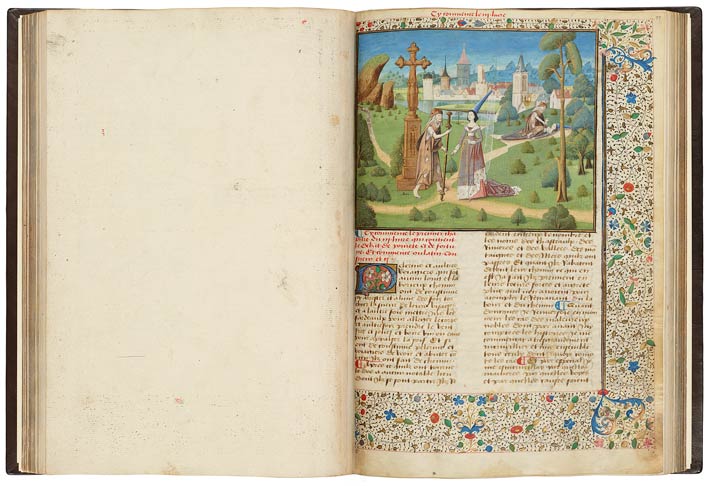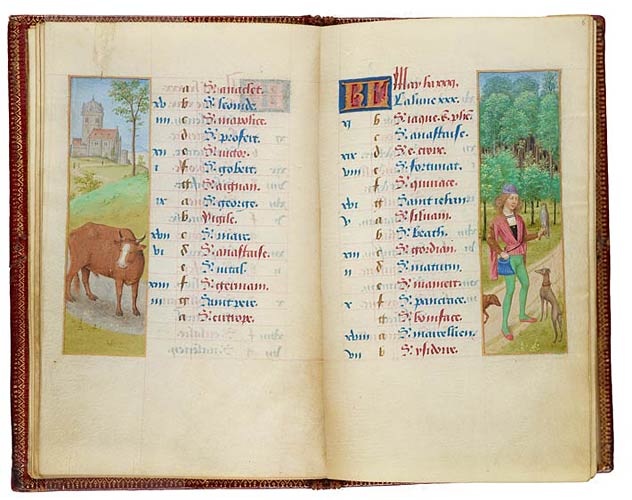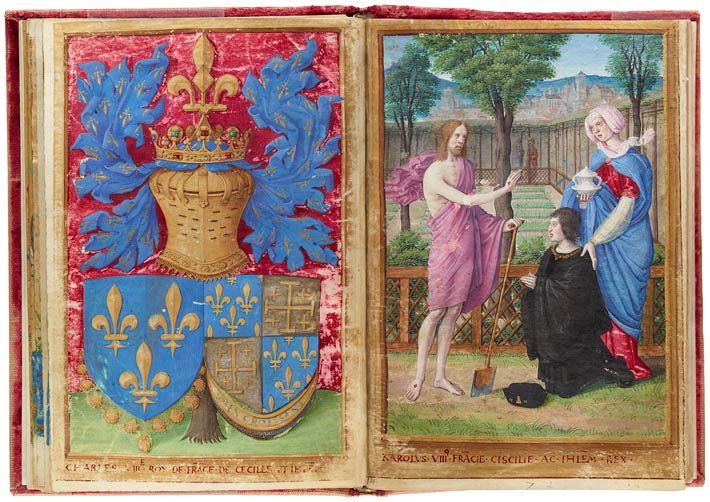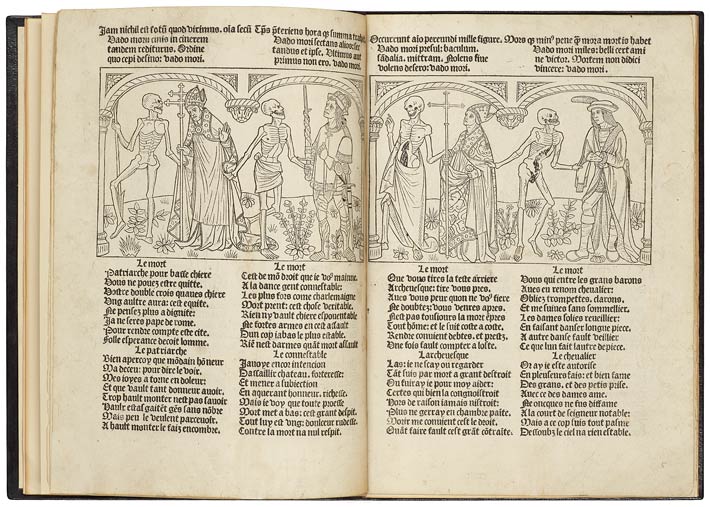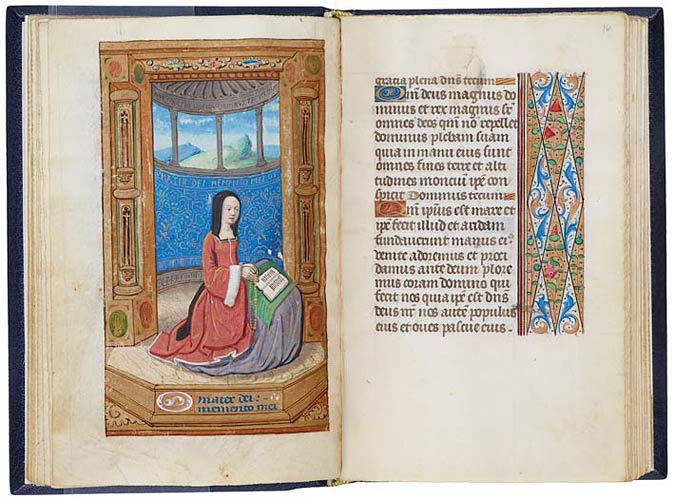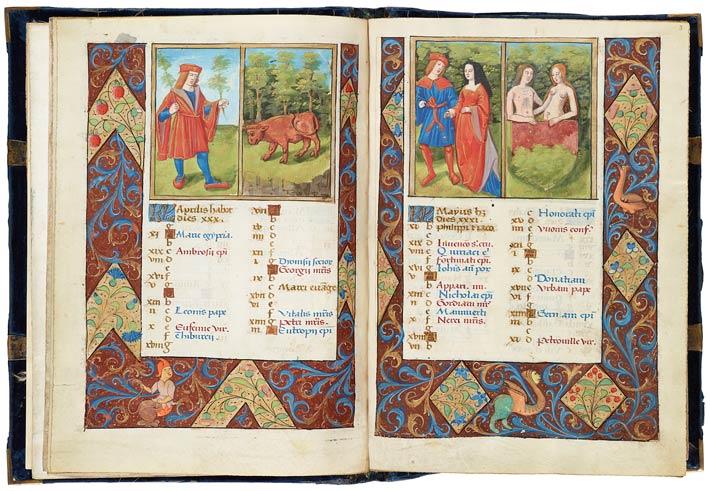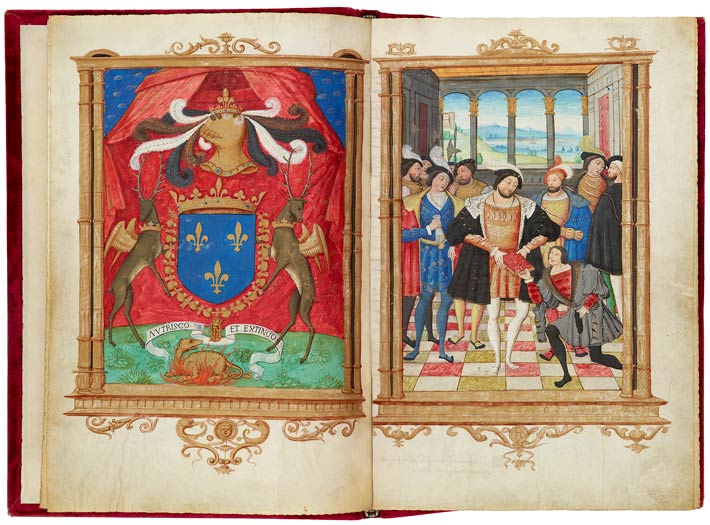
This exhibition explores the evolution of courtly clothing from the "Fashion Revolution" around 1330 to the flowering of the Renaissance in France following the accession of King François I in 1515. During this period, the modern notion of changing fashion was reborn. Because few actual garments from the Middle Ages survive, we use the art of this era — illuminated manuscripts and early printed books — to reveal its evolving styles. Concentrating on France and Flanders, this show also makes the occasional foray into England, Germany, and Holland. In addition, the exhibition touches on the potential impact of political unrest and social upheaval on the history of fashion during one of the world's more calamitous eras. The vicissitudes of the Hundred Years' War, the occupation of Paris by the English, and the arrival of the Italian Renaissance in northern Europe, for example, influenced clothing styles. Also explored here are the ways in which artists used clothing (garments actually worn) and costume (fantastic garments not actually worn) to help contemporaneous viewers interpret a work of art. The garments depicted were often encoded clues to the wearer's identity and moral character.
This exhibition is generously underwritten by a gift in memory of Melvin R. Seiden and by a grant from the Samuel H. Kress Foundation.
Major support is provided by The Coby Foundation, Ltd., with additional assistance from the van Buren family in memory of Dr. Anne H. van Buren, and from the Janine Luke and Melvin R. Seiden Fund for Exhibitions and Publications.
![]()
![]()




